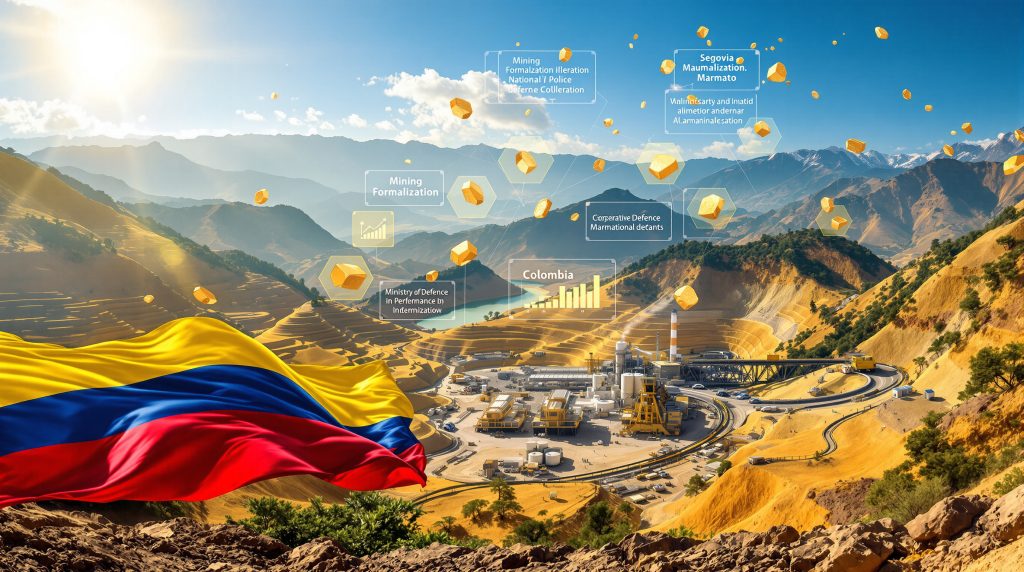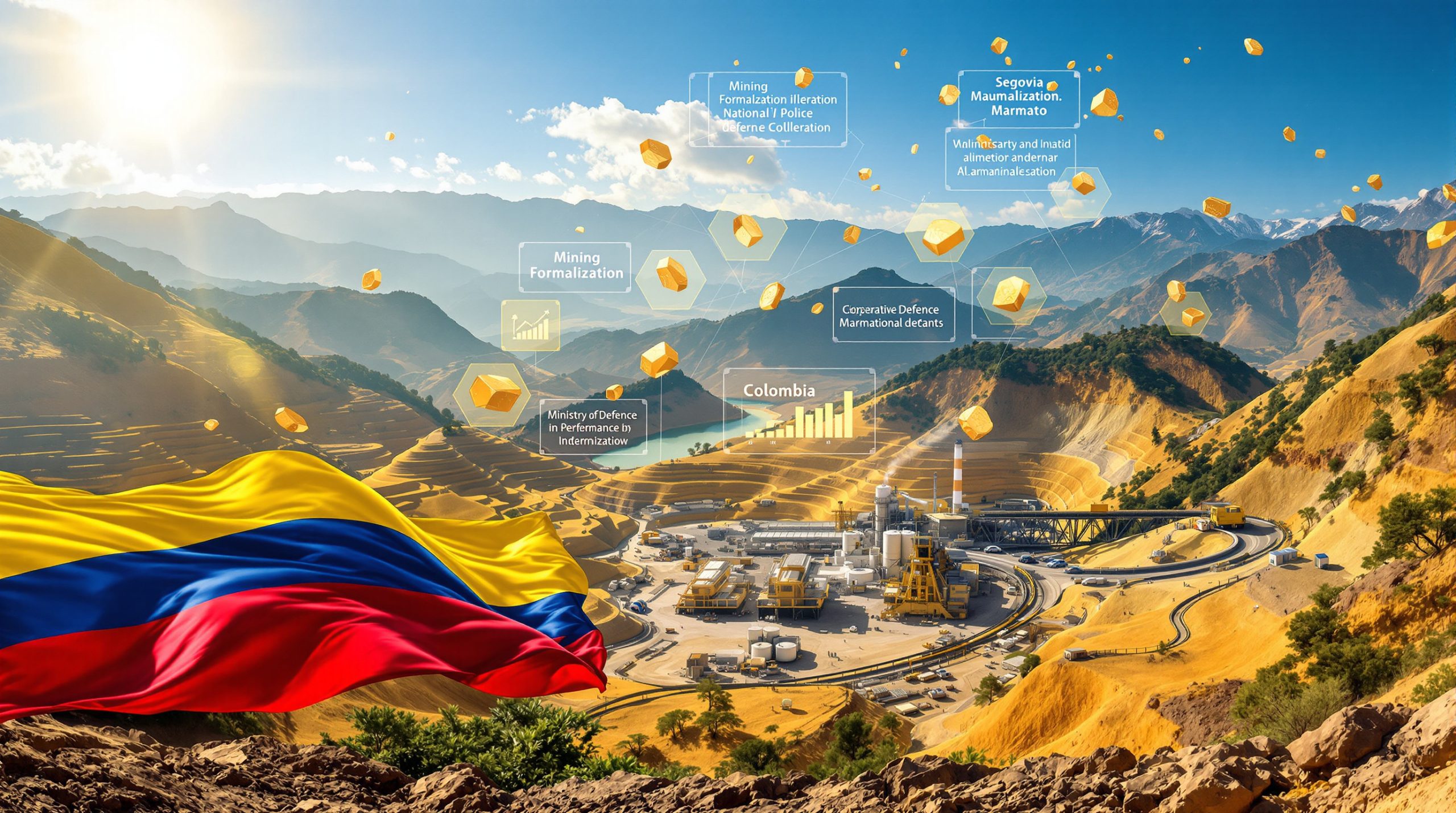The recent resolution of a high-profile international arbitration case has captured significant attention across global mining markets. The Aris Mining Colombia arbitration settlement represents a groundbreaking approach to investor-state dispute resolution, offering valuable insights for the broader extractive industry. Furthermore, this case demonstrates how collaborative frameworks can reshape traditional adversarial relationships between multinational corporations and host governments, particularly in regions where mining evolution trends continue to influence regulatory approaches.
Understanding Colombia's Historic Investor-State Resolution
The settlement between Aris Mining and Colombia's National Agency for Legal Defence of the State (ANDJE) concludes a seven-year dispute rooted in the International Centre for Settlement of Investment Disputes (ICSID) process, triggered under the Canada-Colombia Free Trade Agreement in 2018.
- Claim Value: The original damages sought exceeded $700 million, placing considerable fiscal pressure on Colombia's legal-defense frameworks.
- Resolution Date: Settlement was achieved on November 20, 2025.
- Implementation Horizon: The agreement covers a ten-year period and is overseen by a joint committee representing both parties.
- Unique Structure: No cash payments exchanged hands; performance obligations were emphasised.
This marks the first investor-state dispute in Colombia's mining history resolved through a performance-based, non-monetary model. The approach underlines Colombia's willingness to adopt more collaborative and sustainable frameworks with foreign investors, similar to recent industry joint ventures emerging across Latin America.
How Did the Arbitration Dispute Originally Emerge?
Mining Rights Complexity in Colombian Gold Regions
Colombia's gold-rich regions, such as Segovia and Marmato, have long experienced tension between formal mining concessions handled by corporate operators and informal artisanal and small-scale mining. These communities, often engaged in unregulated extraction, contributed to operational instability, leading to safety, environmental, and legal complications.
- Key Locations: The Segovia Operations and Marmato Complex were at the centre of the dispute.
- Interference: Operational disruptions were frequently attributed to illegal mining activities and security threats endemic to these territories.
International Legal Framework Activation
The legal escalation began in May 2018, when Gran Colombia Gold (now Aris Mining) filed for ICSID arbitration, invoking the Canada-Colombia FTA for protection against what was perceived as state inaction on illegal mining.
Timeline:
- 2018 – ICSID dispute initiated by Gran Colombia Gold.
- 2022 – Corporate restructuring led to the creation of Aris Mining Corporation.
- 2025 – Mutually crafted settlement reached.
This episode forms part of a broader trend in the 2010s, as multiple extractive industry disputes entered international arbitration. However, unlike cases involving tax authorities' intervention in other jurisdictions, this dispute centred on operational security and regulatory clarity.
What Makes This Settlement Structure Unprecedented?
Zero-Cash Compensation Model
The Aris Mining Colombia arbitration settlement departs from historical convention; instead of a financial payout, the agreement is structured around enforceable, performance-based commitments spanning a decade.
| Traditional Arbitration Outcomes | Aris Mining Settlement Approach |
|---|---|
| Monetary awards to investors | Performance-based obligations |
| Government liability payments | Collaborative security initiatives |
| Punitive financial settlements | Cooperative development programmes |
| Win-lose arbitration results | Mutual benefit frameworks |
- Cash Paid: None—each party absorbs its own legal/arbitration costs.
- Enforceability: Obligations are embedded within Colombian legal and administrative frameworks.
Three-Pillar Performance Framework
The settlement pivots around three strategic areas:
1. Mining Formalisation in Marmato:
- Structured schemes to bring artisanal miners into regulatory compliance
- Enhanced community inclusion strategies
- Regulatory training and education efforts
2. National Police Collaboration:
- Joint security planning and intelligence exchanges
- Increased police presence and response to mining-related threats
3. Ministry of Defence Cooperation:
- Strategic surveys to improve risk assessment
- Security stabilisation for operational continuity
- Layered protocols to address evolving threats
Additional Oversight: The Attorney General's Office offers enforcement support, while CORPOCALDAS, the regional environmental authority, ensures environmental standards. This integration reflects broader industry emphasis on reclamation and innovation practices.
Why Does This Resolution Model Matter for Global Mining Investment?
Shifting Arbitration Economics
Historically, investor-state dispute resolution bordered on adversarial, often resulting in lasting fallout, regulatory hesitance, and reduced reinvestment. Consequently, the Aris Mining Colombia arbitration settlement is setting a fresh precedent:
- From Payouts to Partnership: The absence of direct compensation aligns incentives for mutual, long-term sector development.
- Reduced Adversarial Baggage: Collaborative, rather than combative, solutions could enhance post-settlement investor relations and operational stability.
Regional Investment Climate Implications
Colombia's government, by demonstrating constructive dispute resolution, signals increased governance maturity—a critical factor for investors considering the region. Policy predictability and willingness to resolve disputes through partnership are expected to enhance Colombia's ability to reach its $4.8 billion mining investment target by 2030.
In addition, this collaborative approach directly impacts investment risk appetite, as investors increasingly factor dispute resolution mechanisms into their project evaluation criteria.
"As nations upgrade their dispute mechanisms, the calculus for foreign mining investment shifts: risk is not only assessed on resource endowment but on demonstrated regulatory responsiveness and dispute management innovation."
How Will the Ten-Year Implementation Framework Function?
Joint Oversight Mechanisms
- Committee Structure: A joint committee, comprised of Aris Mining and ANDJE representatives, regularly reviews and adapts compliance strategies.
- Transparency: Both parties are accountable for milestones enforcement and reporting.
- Flexibility: The structure is designed to accommodate operational changes or unforeseen risks over time.
Regional Environmental Authority Integration
CORPOCALDAS, the regional environmental body, plays an essential oversight role, monitoring adherence to environmental standards and enacting penalties if necessary. The integration of environmental governance into the arbitration settlement framework mirrors current industry best practice and reassures stakeholders demanding sustainable operations.
What Are the Broader Economic Implications for Colombian Mining?
Production Scale and Growth Trajectory
- Current Output: Aris Mining produced approximately 210,955 ounces of gold in Colombia during 2024.
- Future Projections: Expansion plans target an annual output surpassing 500,000 ounces by 2026, leveraging new operational security and legal certainty.
Production Targets
| Year | Gold Output (oz) |
|---|---|
| 2024 | 210,955 |
| 2026* | 500,000+ |
*Projected
Sectoral Confidence Building
By resolving a potentially debilitating legal issue, the settlement strengthens investor and stakeholder confidence. Moreover, it demonstrates that the Colombian government is prepared to work alongside established companies through regulatory, security, and operational challenges.
How Does This Settlement Compare to Other Latin American Mining Disputes?
Regional Arbitration Trends Analysis
| Country | Recent Arbitration Outcomes | Settlement Approach |
|---|---|---|
| Peru | Mixed monetary/operational | Traditional compensation |
| Chile | Policy shift/compliance focus | Regulatory adjustment emphasis |
| Colombia | Performance-based, collaborative | Development-oriented, mutual-gain |
| Argentina | Provincial variations | Local/Jurisdiction-based solutions |
Colombia's model breaks from the region's dominant tradition of compensation-focused settlements. Furthermore, it demonstrates how targeted, multi-stakeholder engagement can create frameworks adaptable for other resource-centric jurisdictions.
Precedent-Setting Potential
This performance-based model is the first of its kind within Colombia's mining industry. However, it highlights the potential for replication elsewhere, especially in sectors where operational continuity relies on community, security, and regulatory harmony.
What Strategic Lessons Emerge for Mining Investors?
Engagement Strategy Evolution
- Early Collaboration Over Litigation: Investing in cooperative relationships from the outset may prevent costly escalation to formal arbitration.
- Performance-Based Models Attract Capital: Agreements centred on operational improvement and joint objectives can lower investment risk premiums.
Risk Management Framework Enhancement
- Multi-Tiered Governance: A combination of local, regional, and national regulatory authorities can provide robust, adaptable oversight.
- Security Partnerships: Proactive integration of police and defence frameworks into project design is emerging as a best practice for high-risk mining geographies.
How Will This Impact Colombia's Mining Investment Attractiveness?
Regulatory Predictability Enhancement
By publicly establishing clear standards and cooperative solutions for resolving investor-state disputes, Colombia enhances its profile as a reliable destination for mining capital. This occurs in an increasingly competitive global environment where regulatory certainty is paramount.
Security Cooperation Framework
The three-pillar model, particularly its joint security initiatives, could offer a blueprint for tackling criminality, illegal mining, and operational threat management across Colombia's diverse gold-producing regions.
What Does This Mean for Future Investor-State Arbitration in Mining?
Alternative Dispute Resolution Evolution
This settlement is likely to be referenced as an alternative mechanism for other jurisdictions considering how to reduce lengthy and expensive legal standoffs. The shift from adversarial to collaborative frameworks could gradually decrease the polarisation at the heart of investor-state conflicts across the sector.
Collaborative Framework Replication
Countries facing persistent resource sector conflict may pursue Colombia's template. Consequently, they could transition from confrontational arbitration to performance-based partnership agreements that deliver more sustainable investor-government relationships. The Aris Mining Colombia arbitration settlement thus establishes a new paradigm for resolving complex mining disputes while maintaining productive long-term relationships between all stakeholders.
Disclaimer and Future Outlook
All forecasts regarding investment climate, settlement replication, and operational models reflect available data as of November 2025. Mining sector dynamics, legal frameworks, and geopolitical trends are subject to rapid change and should be regularly re-evaluated with updated information.
For further exploration, comprehensive coverage of this settlement can be found through Mining Weekly's detailed analysis and Yahoo Finance's financial reporting on the agreement's implications for mining investment strategies in Latin America.
How Can You Stay Ahead of Mineral Discovery Trends?
Discover what makes historic discoveries lead to substantial returns by visiting Discovery Alert's dedicated discoveries page, powered by the proprietary Discovery IQ model. Start your market journey with a 30-day free trial to capitalise on real-time insights today.




